The given figure represents destructive distillation of coal. Destructive distillation is the strong heating of a substance in the absence of air.
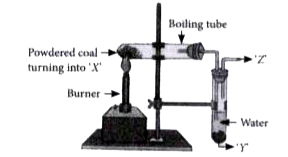
Match the columns.
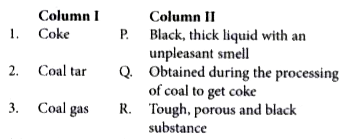
A
1-0, 2-P, 3-R
B
1-R, 2-P, 3-Q
C
1-P, 2-R, 3-Q
D
1-Q, 2-R, 3-P
Video Solution
Text Solution
The correct Answer is:B
1-R, 2-, 3-Q
|
Updated on:21/07/2023
Topper's Solved these Questions
- BOOK - MTG IIT JEE FOUNDATIONCHAPTER - FOOTSTEPS towards(CBSE Board)EXERCISE - SECTION - B10videos
FOOTSTEPS towards(CBSE Board)
- BOOK - MTG IIT JEE FOUNDATIONCHAPTER - FOOTSTEPS towards(CBSE Board)EXERCISE - SECTION - C11videos
FOOTSTEPS towards(CBSE Board)
- BOOK - MTG IIT JEE FOUNDATIONCHAPTER - FOOTSTEPS TOWARDS (NEET)EXERCISE - Multiple Choice Question45videos
FOOTSTEPS TOWARDS (NEET)
- BOOK - MTG IIT JEE FOUNDATIONCHAPTER - MATERIALS : METALS AND NON-METALSEXERCISE - Olympiad/HOTS Corner20videos
MATERIALS : METALS AND NON-METALS
Similar Questions
Knowledge Check
- Question 1 - Select One
The given figure represents destructive distillation of coal. Destructive distillation is the strong heating of a substance in the absence of air.
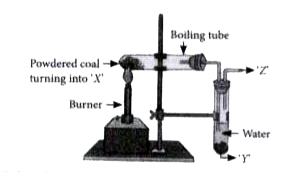
Which of the following is the correct statement?ACoal tar is an almost pure form of carbon.BOn heating, coal produces mainly nitrogen dioxide gas.CCoke is not used in the manufacture of steel and in the extraction of many metals.DCoal gas was used for street lighting. - Question 2 - Select One
The given figure represents destructive distillation of coal. Destructive distillation is the strong heating of a substance in the absence of air.
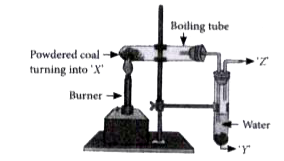
'X', 'Y' and 'Z' in the given figure isAX Coal tar Y Coke Z Coal gasBX Coal gas Y Coal tar Z CokeCX Coke Y Coal tar Z Coal gasDXCoke Y Coal gas Z Coal tar - Question 3 - Select One
The given figure represents destructive distillation of coal. Destructive distillation is the strong heating of a substance in the absence of air.
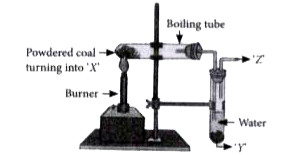
Coal is a fossil fuel and it cannot be prepared in a laboratory or industry because the formation of coal
(I) is a very slow process
(II) needs very low pressure and low temperature
(III) needs very high pressure and high temperature
(IV) causes air pollutionA(I) and (II)B(II) and (IV)C(I) and (III)D(III) and (IV)
Coke is made by the destructive distillations of coal.
View SolutionThe given figure represents destructive distillation of coal. Destructive distillation is the strong heating of a substance in the absence of air.
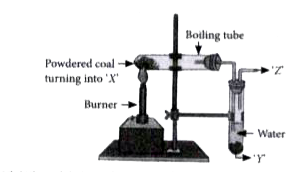
Pis processed in industries to get some useful products such as 'Q', 'R' and 'S. 'S' is obtained during the processing of P' to get 'Q, 'R' is a mixture of about 200 substances. Identify 'P', 'R' and 'S.View SolutionDestructive distillation of coal yields
View SolutionDestructive distillation of coal leads to the formation of
View SolutionDestructive distillation of coal leads to the formation of
View Solution

